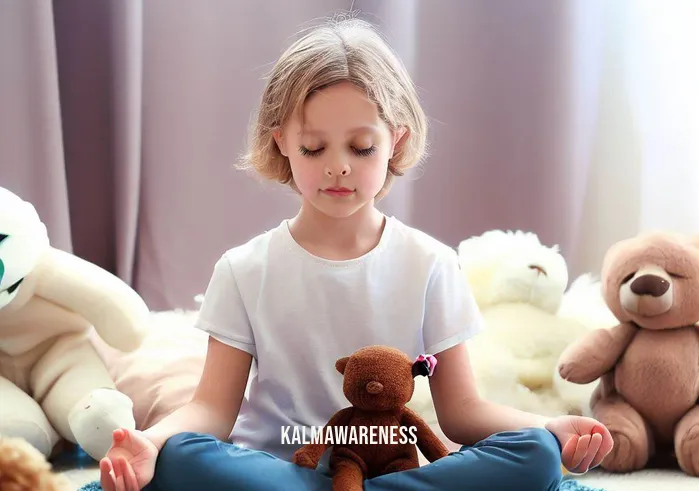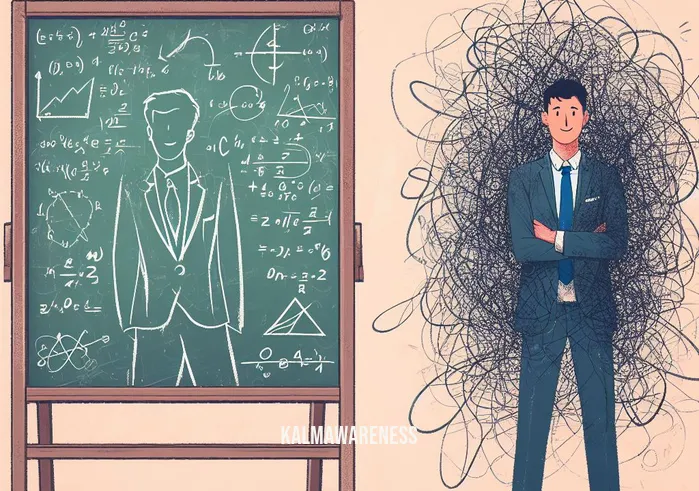Unlocking the Power of Children’s Guided Meditation for Deep Sleep
The Growing Challenge of Ensuring Quality Sleep for Kids
We live in a world that is busier and more stimulating than ever before. With the advent of technology and the constant influx of information, even our youngest ones are finding it hard to settle down and get a good night’s sleep. The categories of Kids, Bedtime, Relaxation, Dreamy, and Sleep are no longer mere words but essential elements that parents struggle to integrate into their children’s lives. The lack of quality sleep can affect children’s physical health, emotional well-being, and academic performance. The answer to this modern challenge might be simpler than you think: children’s guided meditation for deep sleep.
Breathing and Meditation: The Cornerstone of Restful Slumber
Breathing and meditation have long been known to induce a state of relaxation and tranquility. The techniques often used in mindful movement for sleep can be especially helpful for children who have a lot of pent-up energy. These activities involve attaining a peaceful state of mind in which thoughts are not occupied by worry, allowing kids to shift their focus away from the distractions of the day. By channeling their energy into deep breathing and slow movements, children are more likely to fall into a restful sleep.
Making It Kid-Friendly: Accessible Techniques for the Little Ones
If the notion of sitting quietly for an extended period seems daunting to your child, you’re not alone. Kids naturally have shorter attention spans, so it’s crucial to tailor the meditation experience to make it enjoyable and effective. The Kid Calm approach focuses on storytelling and imagination to engage children in the meditative process. Imagine a bedtime story, but one that incorporates deep breathing exercises and visualization techniques to make the transition to sleep seamless.
The Diversity of Meditation Practices
When one speaks of meditation, it’s easy to imagine a singular practice of sitting cross-legged and chanting mantras. However, meditation is a highly diversified field. For example, EMDR meditation involves eye movement desensitization and reprocessing, which could be particularly useful for children who have experienced traumatic events. There are also methods like floating meditation and even hand yoga poses that can be woven into a bedtime routine.
How Meditation Promotes Deep Sleep
Guided meditation can do wonders in transporting a restless mind to a place of serenity. Techniques such as bed in the clouds meditation allow children to visualize themselves sleeping on a bed of soft, fluffy clouds, adding an element of dreamy fantasy to the process. Incorporating elements like binaural beats for migraines can also help in soothing headaches or pain that might prevent a good night’s sleep. The result? A child who not only falls asleep more quickly but also experiences a deeper, more restful sleep.
The challenges of modern living demand innovative solutions, and guided meditation offers a viable and natural remedy to sleep problems plaguing our children. As a parent, you have the chance to introduce your child to these techniques, providing them the tools they need to navigate the chaotic world around them.
Intrigued to learn more? In the next segment, we will delve deeper into how to effectively introduce these meditation techniques to your child, ensuring a night of undisturbed and rejuvenating sleep. Continue reading to uncover the practical steps you can take to make children’s guided meditation for deep sleep a part of your family’s bedtime routine.

Exploring Techniques and Benefits of Children’s Guided Meditation for Deep Sleep
Why Traditional Methods Often Fall Short
In our quest for ensuring restful sleep for children, traditional methods like lullabies, bedtime stories, and even some over-the-counter medications have shown limitations. The critical missing component in many cases is the active engagement of the child’s mind in a way that promotes true relaxation and readies them for deep sleep. This is where children’s guided meditation for deep sleep can make a world of difference, going beyond just making them drowsy to initiating a state of complete mental and physical relaxation.
The Anatomy of Guided Meditation for Kids
Guided meditation for children often incorporates several elements to make it engaging and effective. Here, we can use techniques from relax and be aware to heighten their consciousness and from soles of the feet meditation to connect them with their bodily sensations.
Components of Children’s Guided Meditation
| Technique | Purpose | Duration |
|---|---|---|
| Breathing Exercise | Calms the mind | 5 minutes |
| Visualization | Engages the imagination | 7-10 minutes |
| Soothing Music | Enhances mood | Throughout |
| Story Narration | Keeps attention focused | Variable |
| Mantras or Positive Affirmations | Strengthens mental well-being | 3-5 minutes |
A List of Go-To Guided Meditation Techniques
There are numerous techniques tailored to meet the diverse needs and preferences of children. The options are vast, but let’s focus on some effective methods.
Mindfulness Breathing: Borrowing from mind breaths, this technique helps children focus on their breath, teaching them how to breathe deeply and slowly.
Progressive Muscle Relaxation: This method is great for children who have a lot of pent-up physical energy and could benefit from u relax moving techniques.
Binaural Beats: This technology can produce real changes in your child’s state of mind, offering benefits like those found in 256 Hz.
Bedtime Stories with a Twist: Stories that incorporate the mindfulness prescription for adult ADHD can be adapted to teach children how to focus their restless minds.
Tailoring Your Approach: Adapt and Modify
Children are not a monolithic group; what works for one might not work for another. One child may find it easy to meditate while lying down, while another might require a more interactive approach. Keep in mind that children’s guided meditation for deep sleep should be a relaxing, enjoyable experience; it should not feel like another chore they have to perform.
Simplicity is Key: Starting Them Young
Contrary to popular belief, you don’t need complicated routines or deep understanding of meditation principles to get started. Resources like Meditation for Dummies and Jack Kornfield’s Meditation for Beginners can simplify the process.
The simplicity in execution is what makes children’s guided meditation for deep sleep an excellent choice for families. From toddlers to teenagers, anyone can benefit from these relaxation techniques, making them a versatile tool in your parenting arsenal.
Ready for the Next Step?
By now, you should have a strong grasp of the various techniques and benefits of children’s guided meditation for deep sleep. The world of meditation is vast, and the right approach for your child is out there waiting to be discovered. In the next chapter, we will look into how to sustain this practice long-term, focusing on strategies to make guided meditation an integral part of your family’s bedtime routine. Trust us, you won’t want to miss the effective hacks and tips we have in store for you! Continue reading to dive even deeper into this transformative practice.

Harnessing Hope and Inspiration Through Children’s Guided Meditation for Deep Sleep
The Transformative Power of Hope in Relaxation Techniques
One might ask, why bring “hope” into a discussion centered around children’s sleep and relaxation? Well, hope is an essential element that motivates us to explore alternatives, innovate, and believe in a brighter future. Just as adults need hope to navigate life’s challenges, children, too, gain resilience and strength through hope. Children’s guided meditation for deep sleep isn’t just a tool for restful slumber; it’s a transformative process that provides a hopeful alternative to restless nights and stressful bedtimes.
A Symphony of Dreams and Aspirations
Involving your child in floating meditation or even more mindful activities like flight rising meditation can help them visualize dreams and aspirations. The visualization process offers them a haven where they can explore their imaginations and look forward to future possibilities, instilling a sense of hope and excitement.
“Hope is the thing with feathers that perches in the soul and sings the tunes without the words and never stops at all.” – Emily Dickinson
This quote beautifully articulates the essence of what these guided techniques offer: a perch for hope within the child’s soul, which subsequently nurtures a dreamy, deep sleep.
Embarking on an Inspirational Journey with Mindful Movements
Incorporating movements like mindful movement sleep techniques could introduce an aspect of dynamic engagement for your child. These movements blend seamlessly into guided meditation routines, adding another layer of richness and depth to the experience.
“You are never too old to set another goal or to dream a new dream.” – C.S. Lewis
No child is too young to begin this wonderful journey towards mindfulness and deep sleep. Each step along this path is a new aspiration realized, a new goal set, and a new dream dreamt.
Hand Yoga and Other Unconventional Routes
There are various creative ways to keep the guided meditation sessions refreshing and inspirational. For example, practicing hand yoga poses during guided meditation can be both relaxing and enlightening for children.
“Your hand opens and closes, opens and closes. If it were always a fist or always stretched open, you would be paralyzed. Your deepest presence is in every small contracting and expanding, the two as beautifully balanced and coordinated as birds’ wings.” – Rumi
This quote encapsulates the essence of how balancing different techniques, like hand yoga, can bring out the best in your child’s guided meditation for deep, restful sleep.
Crafting the Blueprint for a Peaceful Mind
Attaining a peaceful state of mind is the ultimate goal for any meditative practice. It’s not merely about closing one’s eyes and seeking a temporary escape. It’s about finding a serene space within oneself that exists independently of external factors.
“The quieter you become, the more you can hear.” – Ram Dass
The peace and quiet that come from a dedicated guided meditation practice offer a much-needed respite for young, constantly buzzing minds. This is where children find the inspiration to dream and the hope to believe in the power of those dreams.
What Awaits in the Next Chapter?
We’ve delved into the hopeful and inspiring dimensions that children’s guided meditation for deep sleep can unlock. With each day, you and your child will discover that this practice is far more than a sleep aid; it’s a treasure trove of emotional and mental riches. In the next chapter, we will explore some practical tips and troubleshooting advice to make this guided meditation journey as smooth as possible. Continue reading for insights that could make all the difference.

Unpacking the Essentials of Children’s Guided Meditation for Deep Sleep
Decoding the Core Elements
By this stage, you’ve been introduced to the multifaceted world of children’s guided meditation for a restful, dreamy sleep. You understand its value in imbuing hope and inspiration in a child’s routine. But how does it all work? What are the integral elements that make this technique so effective? Let’s break it down.
The Role of Breathing Techniques
One can’t stress enough the importance of proper breathing in meditation. It serves as the foundation upon which all else is built.
Mind Breaths: Understanding the concept of mind breaths can significantly enrich a child’s meditation experience. This involves being aware of each inhalation and exhalation.
256 Hz Benefits: Sound frequencies like 256 Hz are often used to enhance deep breathing techniques, further enabling a state of calm and peace.
Meditation Styles for Children
While there are numerous types of meditation techniques, not all are suitable for children. Here are some methods tailored for the young ones:
Kid Calm: This technique centers around helping children identify and manage emotions effectively.
Meditation Made Simple: Sometimes, the simpler the better. Here are some uncomplicated meditation practices that can be easily implemented into a child’s bedtime routine.
Inclusion of Sounds and Music
Music has an emotive power that can transport us to different realms of the mind.
Binaural Beats for Migraine: Though traditionally used for migraine relief, binaural beats have found their place in children’s guided meditation for deep sleep. They help harmonize the brain’s different hemispheres, leading to relaxation.
Bed in the Clouds: This relaxing piece often serves as an auditory backdrop for children’s meditation, inviting a dreamy landscape for the young ones to explore.
Postures and Positions
Physical positioning can make a significant difference in how a child perceives their meditation experience.
Can U Meditate Lying Down: Believe it or not, lying down during meditation is possible and can be very effective for children.
Soles of the Feet Meditation: This method centers around grounding and offers an alternative to traditional sitting postures.
Pulling It All Together
You’ve now been equipped with a plethora of tools and techniques to build or enrich your child’s journey into guided meditation for deeper, more peaceful sleep. Each of these elements has its own unique strengths and contributions, making it a multifaceted approach that’s adaptable to individual needs.
“You have within you right now, everything you need to deal with whatever the world can throw at you.” – Brian Tracy
Armed with this knowledge, the process of implementing children’s guided meditation becomes less daunting and more of an enlightening adventure, waiting to unfold.
What Lies Ahead
Having dissected the essentials, you’re probably wondering what’s left. Believe it or not, we still have a rewarding journey ahead. In the final chapter, we will discuss how to consolidate all of this information into a practical, effective, and enjoyable routine for your child. Stay tuned for tips that will help you and your little one build a lifelong bond with meditation for a more serene and fulfilling life.

A Restful Conclusion: The Path Forward with Children’s Guided Meditation for Deep Sleep
A Journey Well Traveled
As we culminate this enlightening expedition into the domain of children’s guided meditation for deep, peaceful sleep, it’s essential to pause and appreciate the ground we’ve covered. From understanding the essentials of breathwork to the influences of sound and posture, we’ve collectively delved deep into techniques to enhance your child’s sleep, relaxation, and overall well-being.
“The journey of a thousand miles begins with a single step.” – Lao Tzu
While the initial step into this sphere might seem intimidating, remember that mindfulness for ADHD has proven to be beneficial even in challenging settings. If it can aid focus in such conditions, imagine what structured meditation can do to enrich your child’s sleep patterns!
The Essence of Dreamy Slumbers
Our pursuit has been graced with a variety of techniques, from the unique floating meditation concept that invokes a sense of weightlessness to EMDR Meditation—a technique often used in trauma therapy but versatile enough for sleep enhancement. And let’s not forget the role of hand yoga poses in channeling energy and focus. This diverse toolkit aims to equip you and your young ones for a lifetime of serene nights and vibrant mornings.
A Final Thought: Where Do We Go from Here?
Having been on this enriching journey, we hope you’re not the same person who began reading this series. The world of children’s guided meditation for deep sleep is as broad as it is deep. There’s always something more to learn, try, and benefit from. As you contemplate the peaceful state of mind that accompanies these practices—similar to a mind that is not occupied by worry—know that this isn’t an end, but a beautiful beginning.
Your Next Steps
Feeling inspired and ready to take action? Fantastic! We’d love to guide you even further. Maybe you’re curious about how movement can affect sleep, or perhaps you’d like to explore what relaxation techniques can do for your mental well-being.
“You are never too old to set another goal or to dream a new dream.” – C.S. Lewis
To make the most of these wonderful techniques, consider revisiting previous sections of this series for a quick refresher. The journey to deep, restful sleep for your child is an ongoing process, and frequent review can only deepen your understanding.
Thank You for Joining Us
We appreciate the time you’ve invested in reading this series. It’s been a pleasure to guide you through the intricacies of children’s guided meditation for rejuvenating sleep. Rest assured, we are committed to bringing you even more enriching content in our future editions. Until then, sleep well and dream big!
So, dear readers, until our next adventure together, continue to explore, learn, and find joy in the little things. Most importantly, never stop seeking a state of inner tranquility for you and your family.




